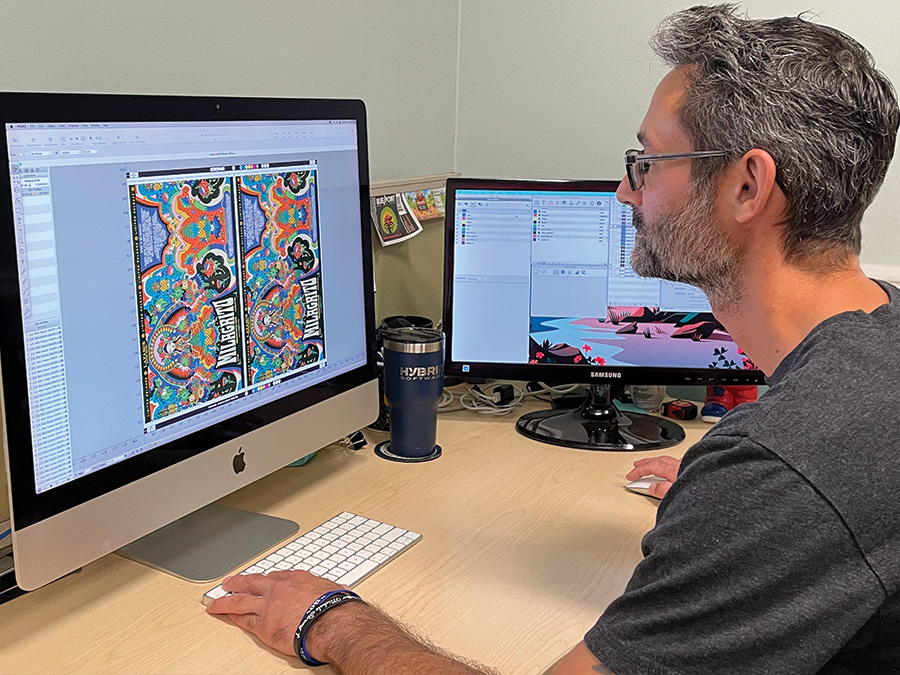Article courtesy of

While print production software is well established and fully functional, what isn’t is the interconnectivity between production and MIS systems. DWS Printing & Packaging is a good example of how a reassessment can be helpful.
Founded in 1865 and based in Deer Park, NY, DWS Printing & Packaging employs 50 people, and focuses primarily on food and beverage packaging, with a strong presence in the craft beer market. Its goal is to deliver the best possible products and service for its customers.
With its offset, flexo, and digital+flexo hybrid presses, DWS can provide any type of label a package requires, including tactile treatments, up to 10 colors with full UV technology, and specialty stocks. A new facility in Austin, TX led to a second hybrid press. The company also prints shrink sleeves, complemented by in-house application onto cans. They are in the process of using their newly installed IC3D software, pending training.
“We were happy with our pretty functional workflow system, but it could not tie properly into our FileMaker MIS system. After struggling for months, we decided to start to look at options,” says John Gulino, COO, DWS.
Because DWS prints offset, flexo, and digital — and gang-run printing — it built a FileMaker system that was geared specifically for their business. The only limitation was integrating it into its existing automated workflow engine. All the information typed into its MIS system had to be manually re-entered into its automation system. While soft proofing was already functional, the promise of tying to the MIS interested DWS most. It was still manually sending out PDFs for customer approval. Clients were approving projects via email, which were manually triggered into the workflow to continue the process.
DWS was shown the HYBRID CLOUDFLOW automated workflow. The possibilities were immediately obvious.
“Now, when we receive a new job, CSRs enter data to the MIS, and it’s imported into the production system. The label information — the size, press, colors, dye number, substrate, coatings, shipping, etc. — can trigger actions,” notes Gulino. “The workflow drives the job. The automated process changes the preflighting parameters; what’s acceptable, what passes, and what fails. It minimizes the number of touch points.”
It even works remotely. All the CSR, artwork, and platemaking for the Austin facility is done at headquarters. When Austin conducts press approvals or looks at scheduling, they are tied into the same corporate DWS workflow and MIS. “It was remarkably simple. The box arrived with the software. I plugged it into our network, HYBRID logged in, tweaked it, and it was up and running,” says Gulino. “The Austin facility could be down the hall or across the country.
“We tried to determine how to organize our sales team’s estimates. HYBRID Software said, ‘Let us think about it.’ Within a couple days, they built a Web form that looked exactly like our existing estimating software,” says Gulino. “Within a week, it was tested and functional. Sales reps can log in and see the status of their estimates. They can forward them to CSRs who can take the estimates and tie them into sales orders and invoices.
“Within a few months of using our new workflow, I am getting excellent buy-in from the entire company. Print buyers also appreciate the functionality, the annotation, and the online proofing. It’s more seamless — easier for them, and faster for us. It’s certainly worth looking at connecting your ERP with your production system. It did what HYBRID Software said it would do,” says Gulino.
